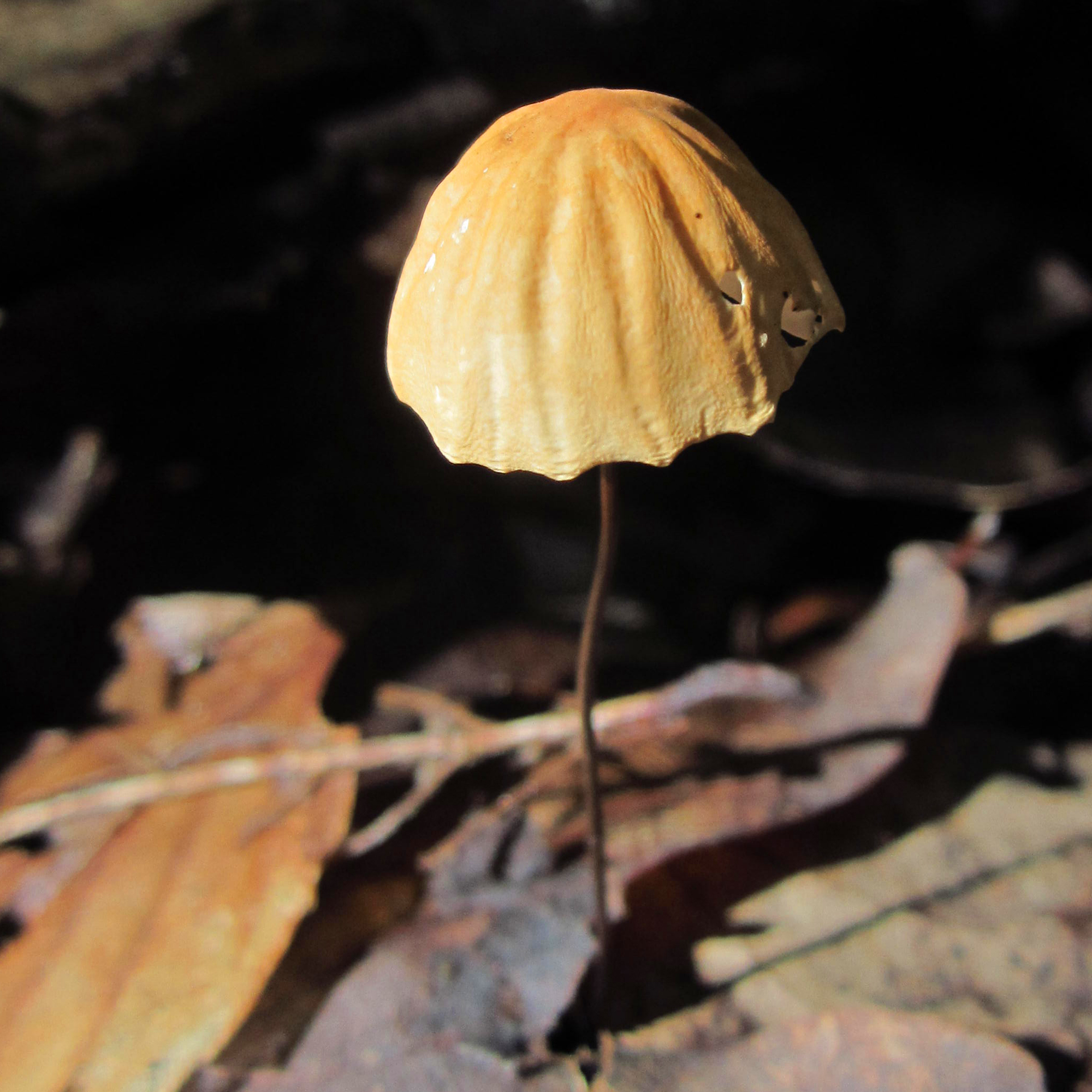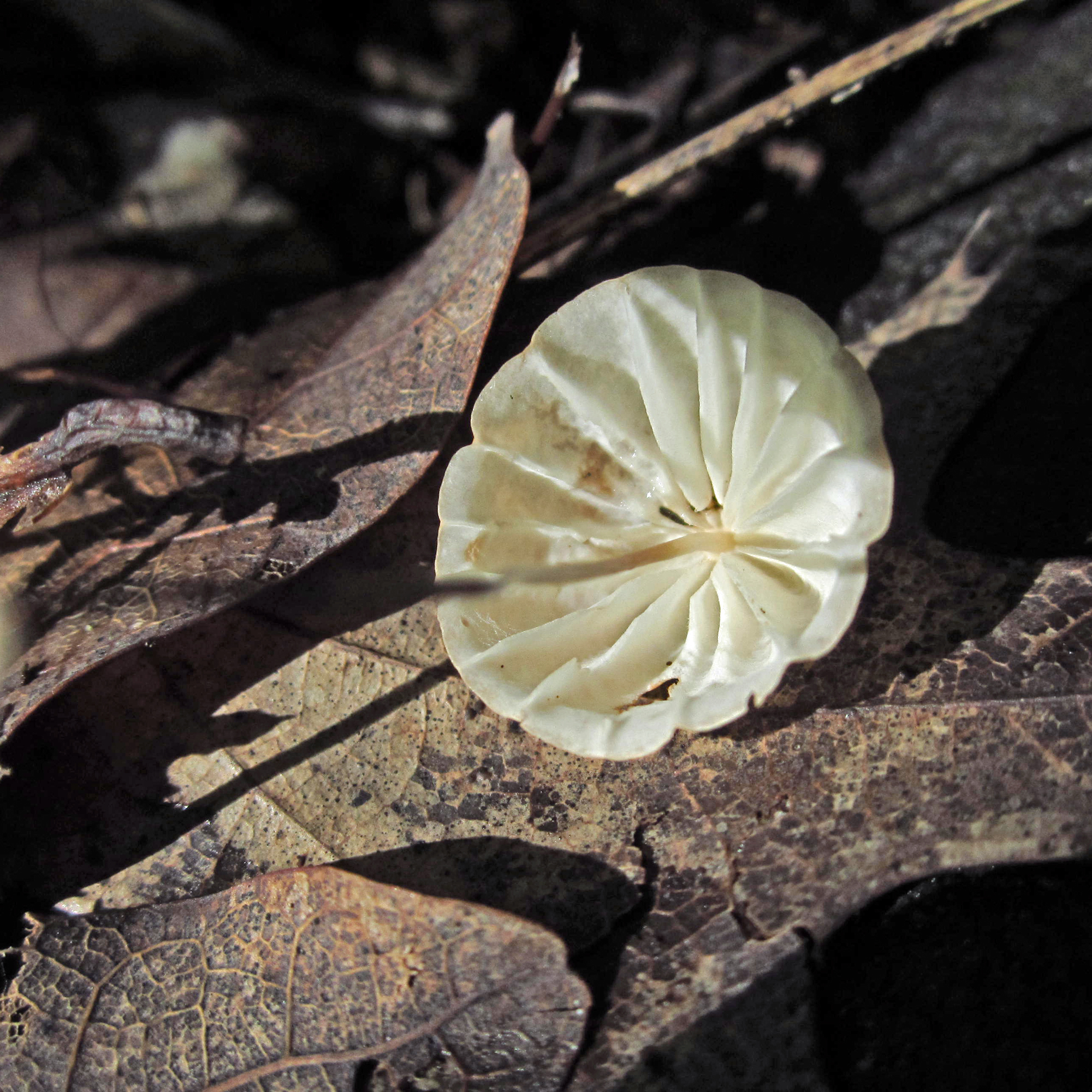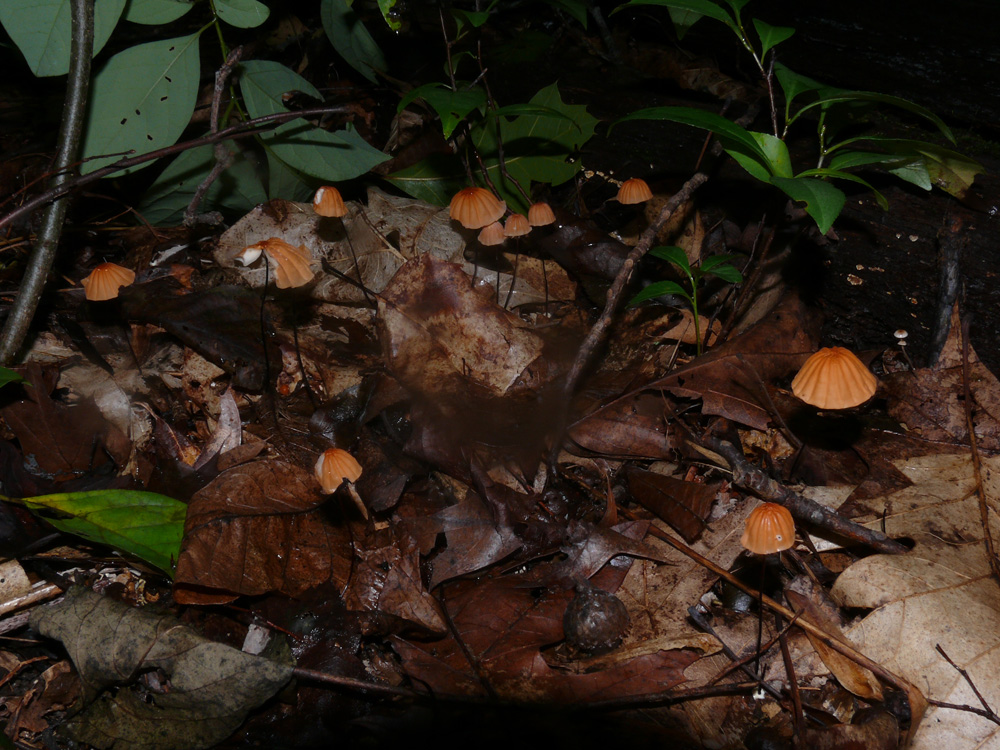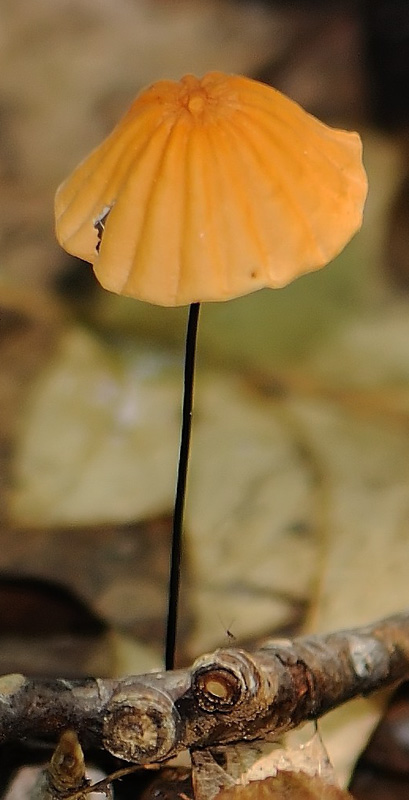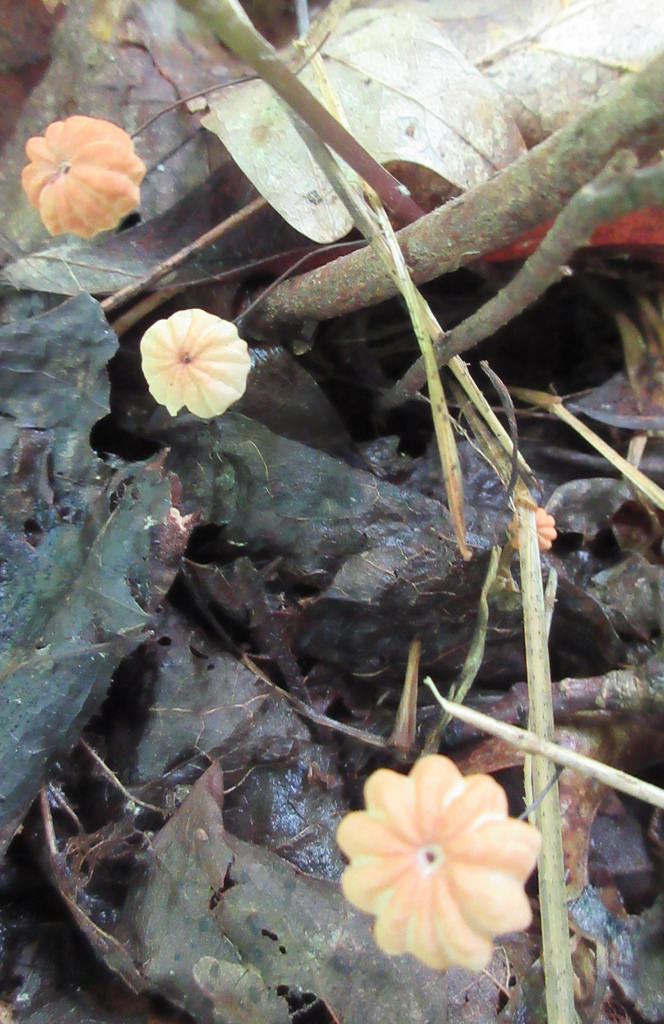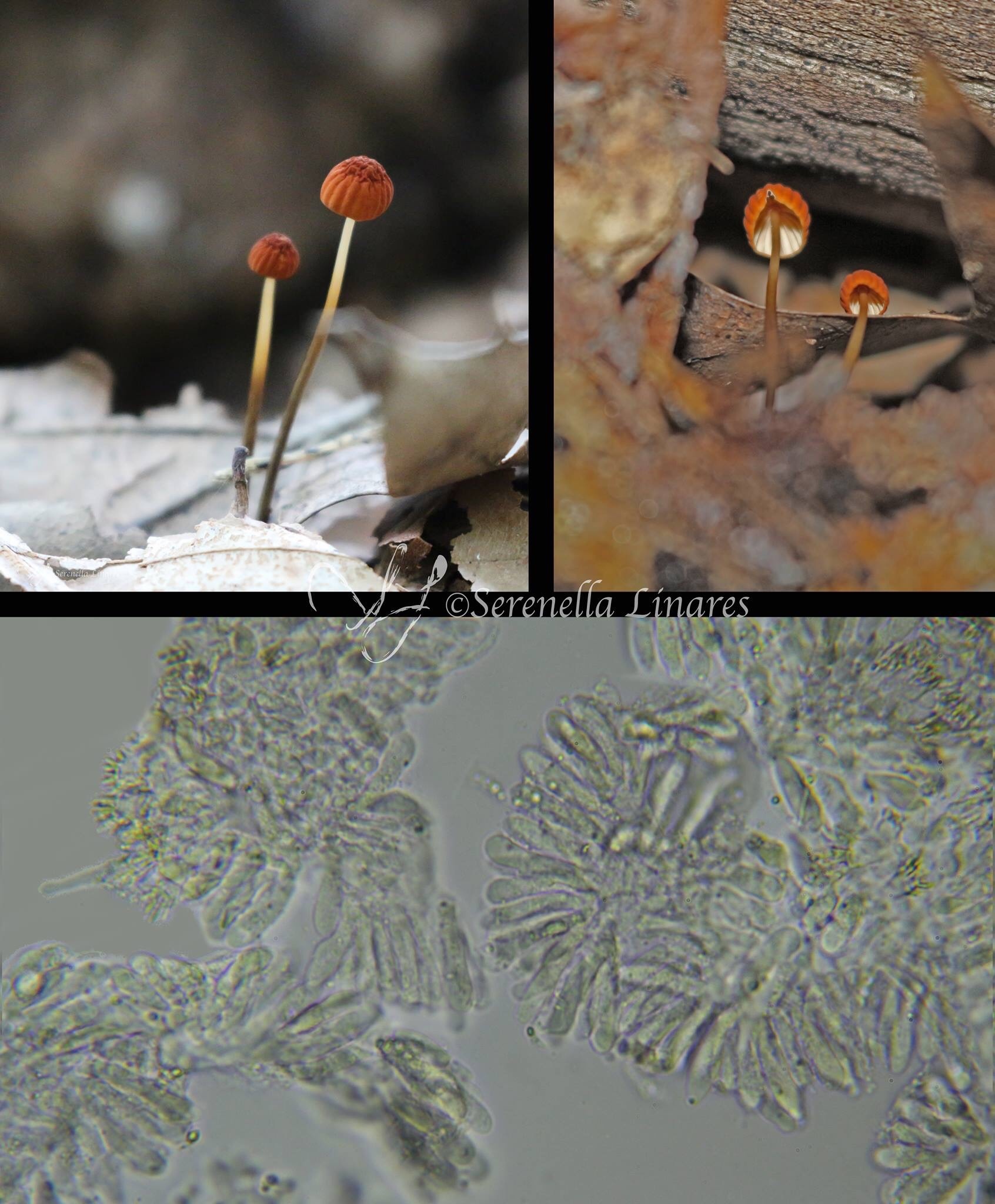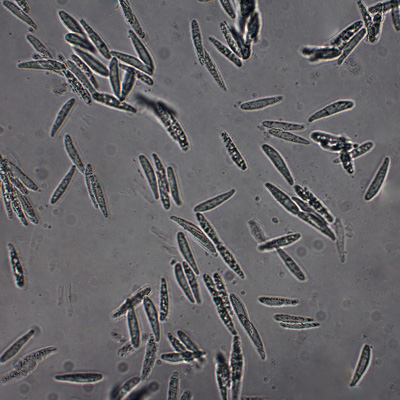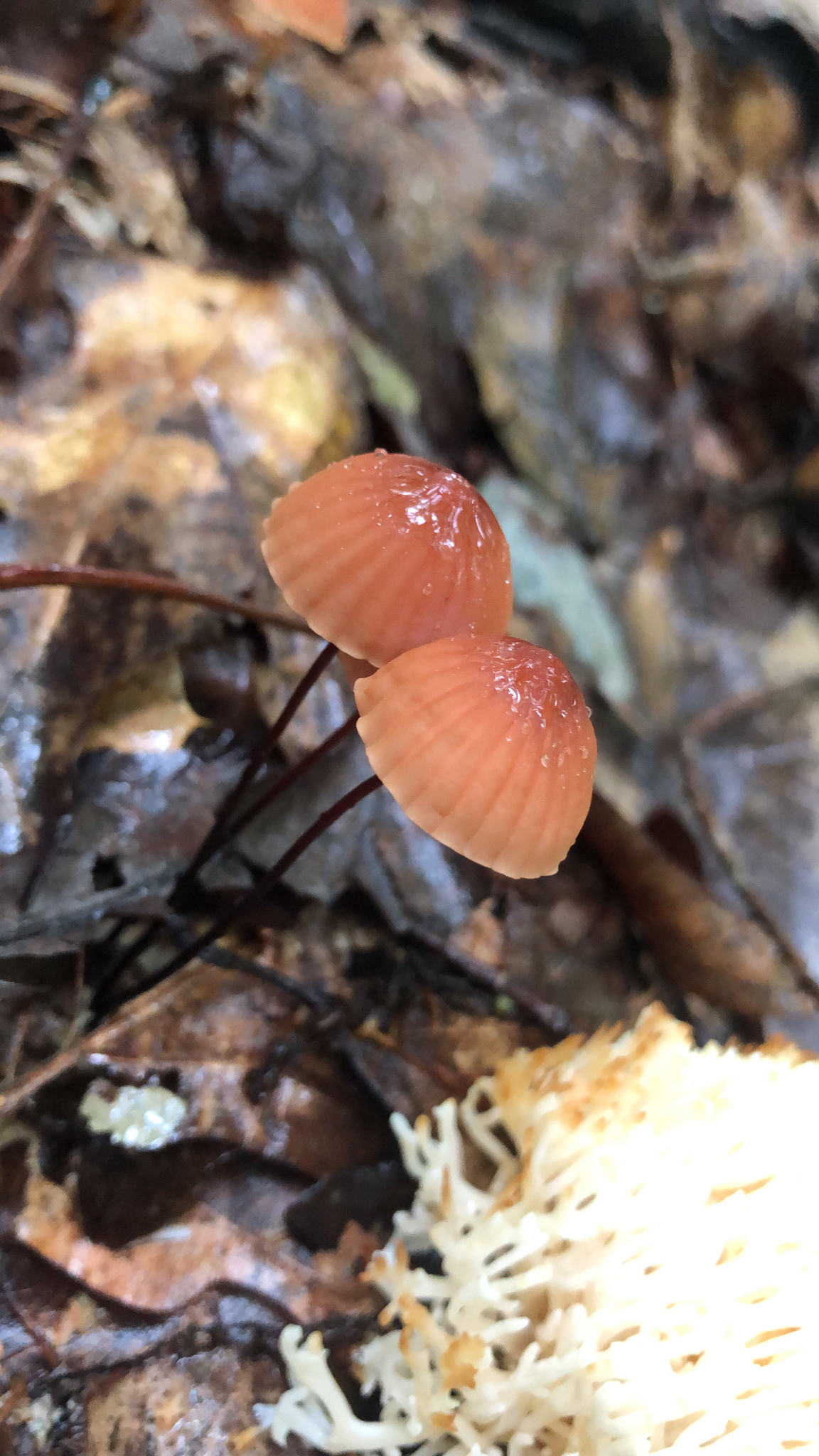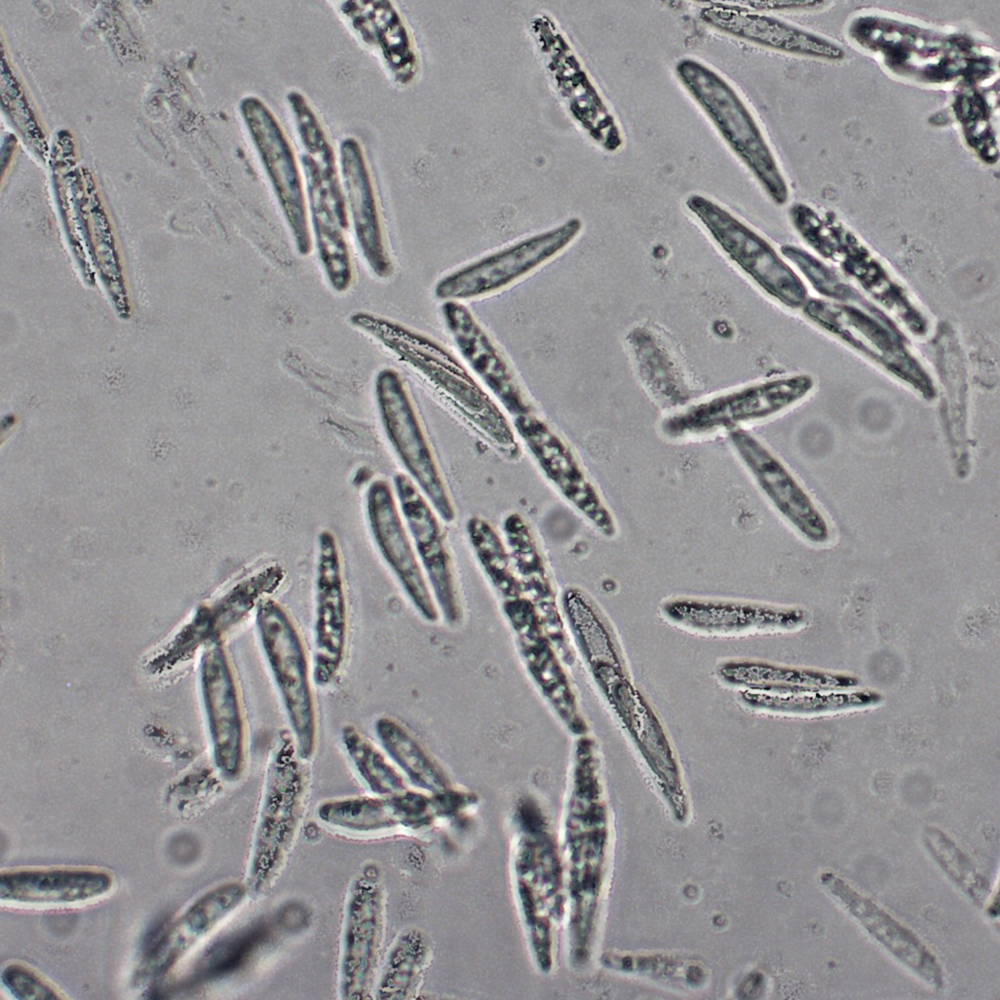Map Snapshot










45 Records
Status
Found scattered or in groups on decaying leaves or conifer needles (white pine).
Description
Cap: Shades of orange; rough, deeply grooved surface; bell-shaped with depressed disc (in age); white, thin flesh. Gills: White to pale yellow, distant. Stalk: Yellowish when young, darkens to brown, thin. (J. Solem, pers. comm.)
Seasonality Snapshot
Source: Wikipedia
| Marasmius siccus | |
|---|---|

| |
| Scientific classification | |
| Domain: | Eukaryota |
| Kingdom: | Fungi |
| Division: | Basidiomycota |
| Class: | Agaricomycetes |
| Order: | Agaricales |
| Family: | Marasmiaceae |
| Genus: | Marasmius |
| Species: | M. siccus
|
| Binomial name | |
| Marasmius siccus | |
Marasmius siccus, or orange pinwheel,[1] is a small orange mushroom in the Marasmius genus, with a "beach umbrella"-shaped cap. The tough shiny bare stem is pale at the top but reddish brown below, and the gills are whitish. The stem is 3–7 centimetres (1.2–2.8 in) tall and the cap is 0.5–2.5 centimetres (0.20–0.98 in) wide.[2][3][4][5]
At a microscopic level, the club-shaped spores are very long and thin, being roughly 19 μm by 4 μm. The distinctive cheilocystidia are broadly club-shaped with finger-like protrusions at the far end. Such cells also sometimes occur in other related mushrooms and they are known as "broom cells of the siccus type".[4][5]
This mushroom is found in hardwood forests from the Rocky Mountains to the Appalachian Mountains[6] and also in northern Europe and Asia.[4][5]
Although nonpoisonous, they are too small to be considered worthwhile as food.[7]
References
[edit]- ^ "Marasmius siccus". Indiana University. Retrieved 16 February 2015.
- ^ Kuo, Michael. "Marasmius siccus". MushroomExpert.Com. Retrieved 16 February 2015.
- ^ "Marasmius siccus". University of Arkansas. Retrieved 16 February 2015.
- ^ a b c Antonín, V.; Noordeloos, M. E. (2010). A monograph of marasmioid and collybioid fungi in Europe. Berchtesgaden, DE: IHW Verlag. p. 84. ISBN 978-3-930167-72-2.
- ^ a b c Knudsen, Thomas; Vesterholt, J., eds. (2018). Funga Nordica Agaricoid, boletoid, clavarioid, cyphelloid and gasteroid genera. Copenhagen: Nordsvamp. p. 360. ISBN 978-87-983961-3-0.
- ^ Kuo, Michael; Methven, Andy (2010). 100 Cool Mushrooms. Ann Arbor, MI: University of Michigan Press. p. 115. ISBN 978-0472034178.
- ^ Miller Jr., Orson K.; Miller, Hope H. (2006). North American Mushrooms: A Field Guide to Edible and Inedible Fungi. Guilford, CN: FalconGuide. p. 198. ISBN 978-0-7627-3109-1.
